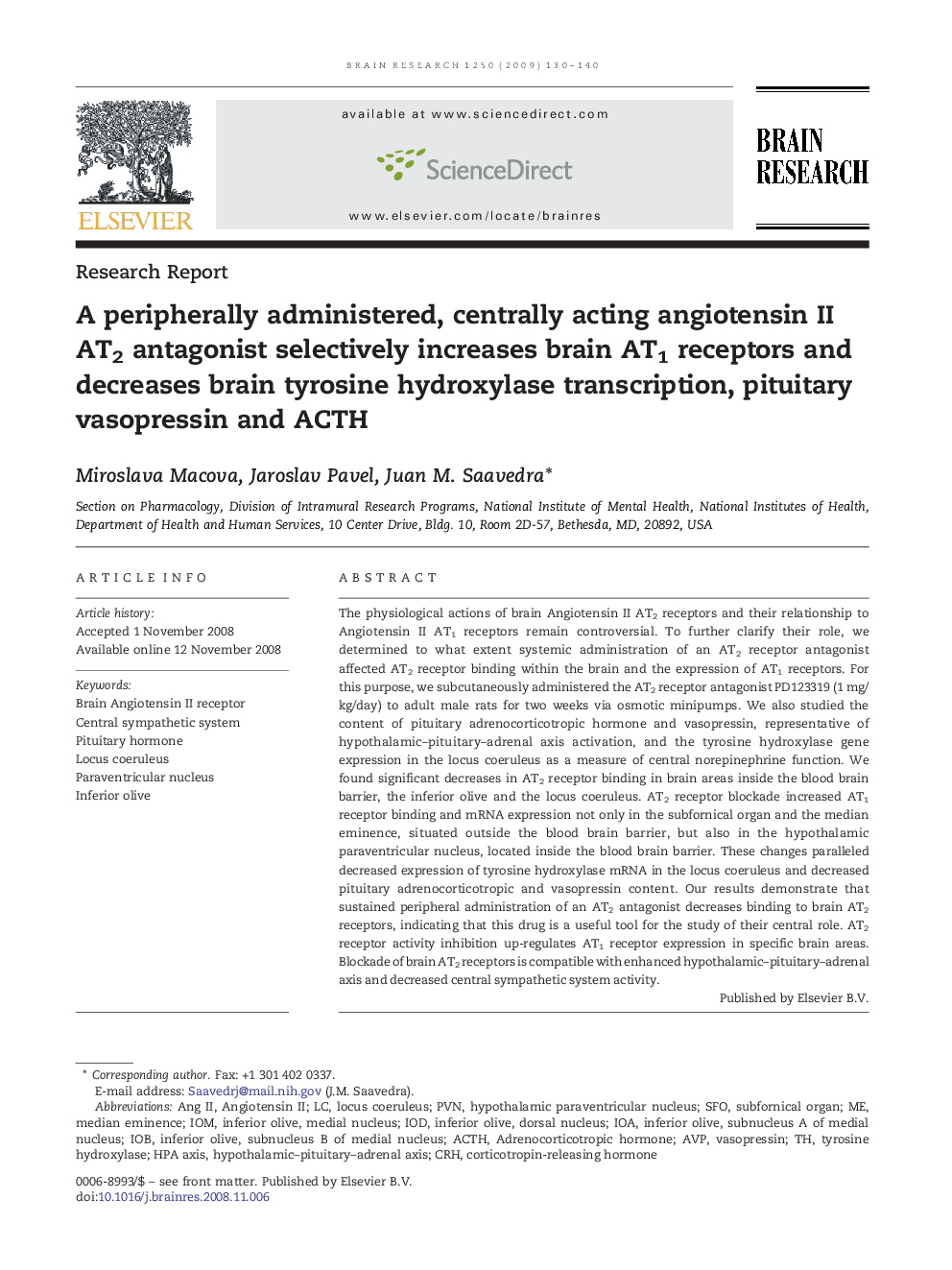| کد مقاله | کد نشریه | سال انتشار | مقاله انگلیسی | نسخه تمام متن |
|---|---|---|---|---|
| 4328720 | 1614189 | 2009 | 11 صفحه PDF | دانلود رایگان |

The physiological actions of brain Angiotensin II AT2 receptors and their relationship to Angiotensin II AT1 receptors remain controversial. To further clarify their role, we determined to what extent systemic administration of an AT2 receptor antagonist affected AT2 receptor binding within the brain and the expression of AT1 receptors. For this purpose, we subcutaneously administered the AT2 receptor antagonist PD123319 (1 mg/kg/day) to adult male rats for two weeks via osmotic minipumps. We also studied the content of pituitary adrenocorticotropic hormone and vasopressin, representative of hypothalamic–pituitary–adrenal axis activation, and the tyrosine hydroxylase gene expression in the locus coeruleus as a measure of central norepinephrine function. We found significant decreases in AT2 receptor binding in brain areas inside the blood brain barrier, the inferior olive and the locus coeruleus. AT2 receptor blockade increased AT1 receptor binding and mRNA expression not only in the subfornical organ and the median eminence, situated outside the blood brain barrier, but also in the hypothalamic paraventricular nucleus, located inside the blood brain barrier. These changes paralleled decreased expression of tyrosine hydroxylase mRNA in the locus coeruleus and decreased pituitary adrenocorticotropic and vasopressin content. Our results demonstrate that sustained peripheral administration of an AT2 antagonist decreases binding to brain AT2 receptors, indicating that this drug is a useful tool for the study of their central role. AT2 receptor activity inhibition up-regulates AT1 receptor expression in specific brain areas. Blockade of brain AT2 receptors is compatible with enhanced hypothalamic–pituitary–adrenal axis and decreased central sympathetic system activity.
Journal: Brain Research - Volume 1250, 23 January 2009, Pages 130–140